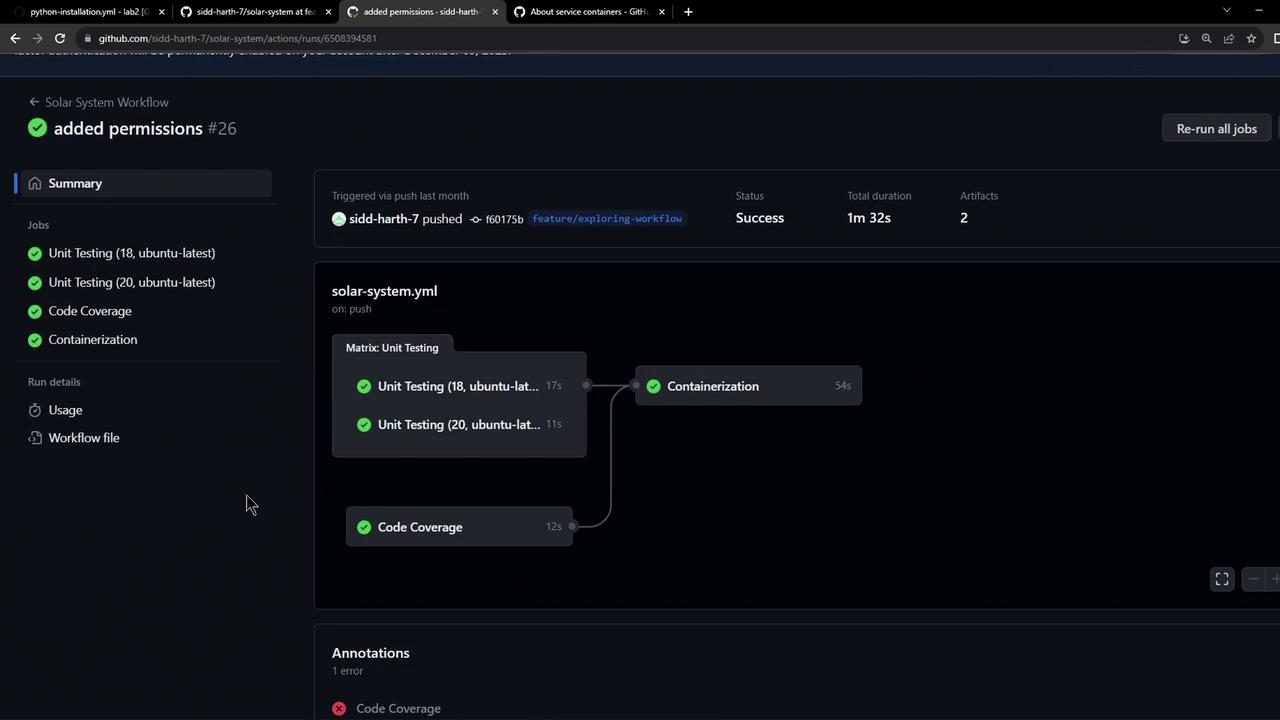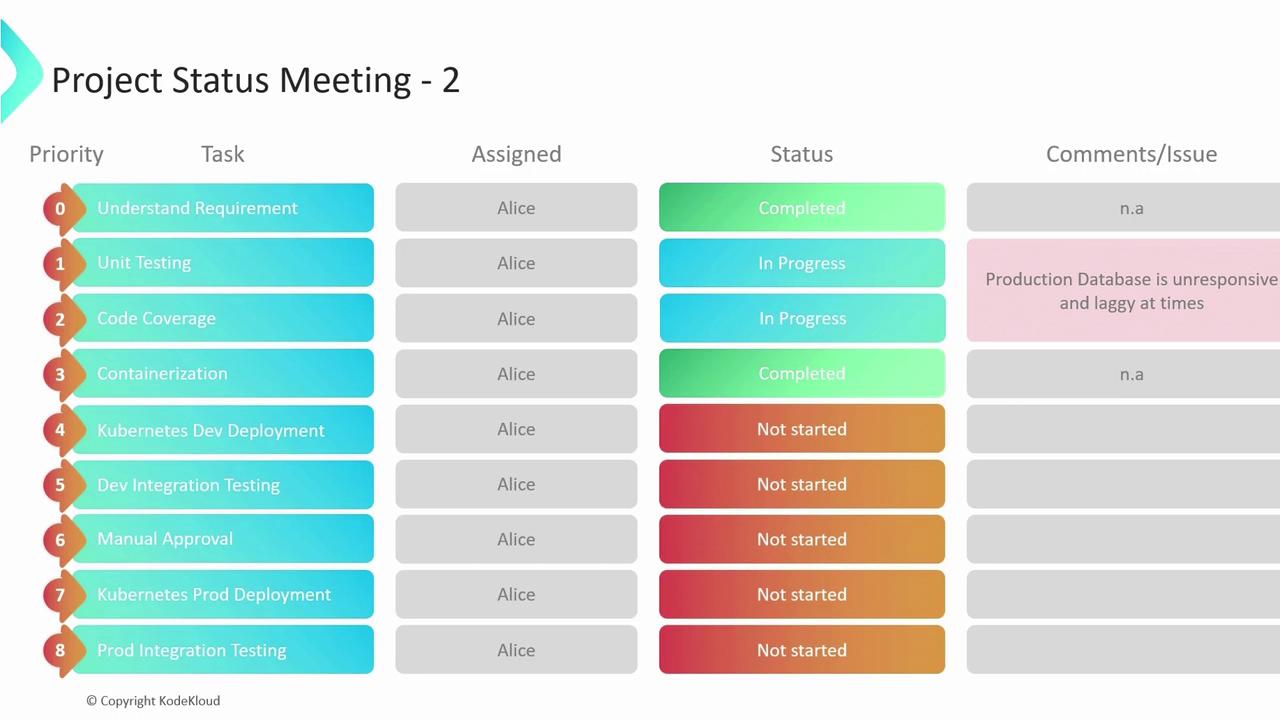GitHub Actions Certification
Continuous Integration with GitHub Actions
Project Status Meeting 2
Welcome to the second project status meeting. In this session, we’ll review how our GitHub Actions workflow began impacting the production MongoDB cluster and outline the steps to isolate our test environments.
1. Issue Discovery
After completing the first four tasks, Alice was summoned to an urgent meeting. The team noticed that their production MongoDB cluster was intermittently unresponsive and slow ever since they integrated unit-testing and code-coverage into their CI pipeline.
1.1 Current Test & Coverage Steps
Both the unit-testing and code-coverage jobs are inadvertently pointing to the production database:
# Shared steps pointing at production DB
- name: Install Dependencies
run: npm install
- name: Unit Testing
id: nodejs-unit-testing-step
run: npm test
- name: Archive Test Result
if: always()
uses: actions/upload-artifact@v3
with:
name: Mocha-Test-Result
path: test.results.xml
code-coverage:
name: Code Coverage
runs-on: ubuntu-latest
steps:
- name: Checkout Repository
uses: actions/checkout@v4
- name: Setup NodeJS Version - 18
uses: actions/setup-node@v3
with:
node-version: 18
- name: Cache NPM dependencies
uses: actions/cache@v3
with:
path: node_modules
key: ${{ runner.os }}-node-modules-{{ hashFiles('package-lock.json') }}
- name: Install Dependencies
run: npm install

2. Root Cause
The workflow’s global env block defines production credentials, causing both testing jobs to connect to the live database:
name: Solar System Workflow
on:
workflow_dispatch:
push:
branches:
- main
- feature/*
env:
MONGO_URI: mongodb+srv://supercluster.d83ji.mongodb.net/superData
MONGO_USERNAME: ${{ vars.MONGO_USERNAME }}
MONGO_PASSWORD: ${{ secrets.MONGO_PASSWORD }}
jobs:
unit-testing:
name: Unit Testing
strategy:
matrix:
nodejs_version: [18, 20]
operating_system: [ubuntu-latest]
exclude:
- nodejs_version: 18
operating_system: macos-latest
runs-on: ${{ matrix.operating_system }}
steps:
- name: Checkout Repository
uses: actions/checkout@v4
- name: Setup Node.js
run: nvm install ${{ matrix.nodejs_version }}
Warning
Never run tests against your production database. Doing so risks data corruption and performance degradation.
3. Refactoring Strategy
To prevent production downtime, Alice proposed spinning up a dedicated MongoDB service container inside the CI job. This gives each job its own ephemeral database instance, fully isolated from production.
3.1 Define a MongoDB Service in GitHub Actions
Add a services section under each job to start a MongoDB Docker container:
jobs:
unit-testing:
runs-on: ubuntu-latest
services:
mongodb:
image: mongo:6.0
ports:
- 27017:27017
env:
MONGO_INITDB_DATABASE: testdb
steps:
- uses: actions/checkout@v4
- name: Wait for MongoDB to start
run: |
for i in {1..10}; do
nc -z localhost 27017 && break
echo "Waiting for MongoDB…"
sleep 5
done
- name: Install Dependencies
run: npm install
- name: Run Unit Tests
env:
MONGO_URI: mongodb://localhost:27017/testdb
run: npm test
| Field | Description |
|---|---|
| services | Defines Docker containers to run alongside the job |
| image | Docker image for the service (e.g., mongo:6.0) |
| ports | Host-to-container port mappings |
| env | Initialization variables for the container |
Note
Using an isolated service container ensures your CI jobs are reproducible and safe. You can apply the same pattern for integration tests, Redis, PostgreSQL, and more.
4. Project Tasks Overview

5. Next Steps
- Update all testing and coverage jobs to use in-job MongoDB services.
- Remove production credentials from the global
envscope. - Validate workflow changes on a feature branch before merging to
main.
Thank you for joining this meeting. Let’s keep our production environment healthy by isolating CI dependencies!
References
Watch Video
Watch video content